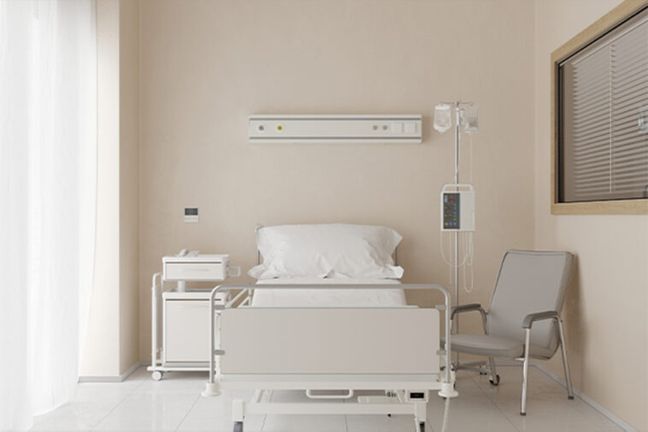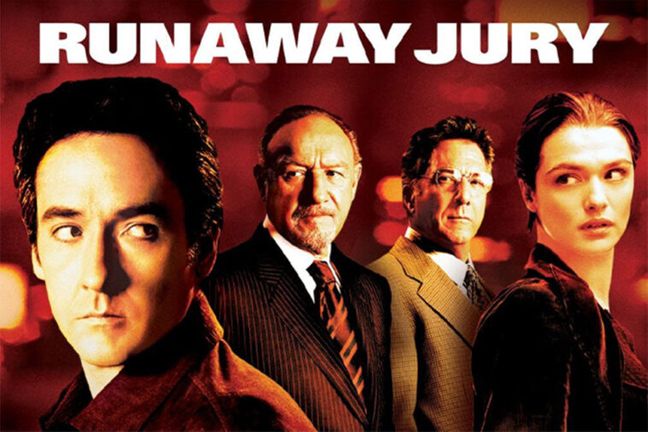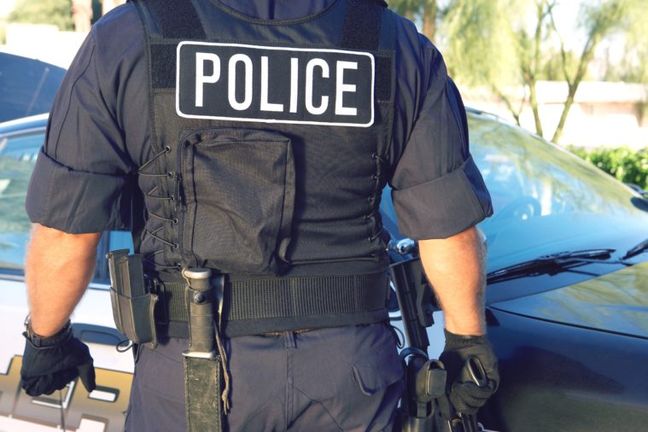Sierra Packaging & Converting, LLC v. OSHA, 133 Nev. Adv. Opn. 83 (Nov. 16, 2017)
The Nevada Supreme Court recently issued an opinion interpreting the language of a federal regulation which requires employers to provide personal protective equipment (PPE) to employees and training on how to use the PPE in certain workplace situations. The case came about due to an anonymous complaint sent into the Nevada Occupational Safety and Health Administration (NOSHA), in which the complainant stated Sierra Packaging & Converting, LLC (hereafter referred to as “Sierra”) was having employees work on top of warehouse racks without requiring fall protection PPE.
A NOSHA investigator went out to Sierra in 2013, interviewed some employees, a manager, and “temporary maintenance personnel hired through a subcontractor” regarding the allegations. The temporary maintenance personnel admitted to receiving fall protection PPE, consisting in part of harnesses, and all understood how to put on the harnesses. Some of he employees also stated Sierra told them to use the PPE. However, none of the temporary maintenance personnel actually knew how to use the fall protection PPE.
As a result, the NOSHA investigator determined Sierra did not properly train its employees in the use of the PPE and cited Sierra “for a ‘serious’ violation of 29 C.F.R. § 1910.132(f)” and fined the company $3,825. The 2011 version of 29 C.F.R. § 1910.132(f)(1) states: “(1) The employer shall provide training to each employee who is required by this section to use PPE.”[1] Sierra opposed the citation and fine to the Nevada Occupational Safety and Health Review Board. At the evidentiary hearing, Sierra argued that although it provided PPE to the employees, the job they were performing on the warehouse racks did not actually require the use of fall protection PPE. Therefore, Sierra was not required to provide training on the use of the PPE and cannot be in violation of the statute.
After reviewing the evidence and arguments, the Board disagreed with Sierra and upheld NOSHA’s citation and fine. The Board concluded that when an employer provides PPE to its employees, 29 C.F.R. § 1910.132 requires the employer to provide training on how to properly use the PPE. Sierra then appealed the Board’s decision to the district court, which upheld the Board’s conclusion. Subsequently, Sierra lodged an appeal with the Nevada Supreme Court.
The Nevada Supreme Court overrules and remands the case.
Before reaching its decision, the Nevada Supreme Court looked at other provisions of 29 C.F.R. § 1910.132 and not just subsection (f). The Court found the following provisions significant:
(a) Application. Protective equipment, including personal protective equipment . . ., shall be provided, used, and maintained in a sanitary and reliable condition wherever it is necessary by reason of hazards of processes or environment[.]
. . . .
(d) Hazard assessment and equipment selection.
(1) The employer shall assess the workplace to determine if hazards are present, or are likely to be present, which necessitate the use of personal protective equipment (PPE).
. . . .
(f) Training.
(1) The employer shall provide training to each employee who is required by this section to use PPE. Each such employee shall be trained to know at least the following: . . .
(iv) The limitations of the PPE.
After reviewing 29 C.F.R. § 1910.132, the Court concluded the Board and district court improperly focused on the fact Sierra gave its employees PPE or that the employees had PPE available to them. The Court held 29 C.F.R. § 1910.132(f) only requires training if hazards in the workplace are present or are likely to be present, which necessitate using PPE. In the present case, the question was whether Sierra’s employees were required to use PPE due to the height they were working at on the warehouse racks.
The Rule of Access
The Court held NOSHA does not need to prove a hazard actually existed, instead “NOSHA could meet its burden of proof here by showing it was reasonably predictable that the employees were or would be exposed to hazardous heights necessitating the use of PPE.” In rendering its decision, the Court adopted the “rule of access” standard articulated in an Oregon court of appeals case.[2] The Court explained the “rule of access” as follows: “Under this standard, when a statute or regulation requires NOSHA to establish employee exposure to a hazard, the Board’s decision regarding a NOSHA citation may be upheld if NOSHA presents substantial evidence demonstrating that exposure to the hazard was or would be reasonably predictable.”
The Court then remanded the case back to the Board to look at the evidence again and render a decision on whether Sierra should have trained its employees based on the “rule of access” standard, not on whether Sierra actually provided PPE to its employees.
Relevance
It is a good business practice to ensure your employees know how to properly use the PPE you provide them. However, this decision can be helpful to employers who are not sure whether PPE is necessary to perform a certain job. Under the “rule of access” standard (i.e., access to hazards), if it is reasonably predicable or foreseeable that an employee may be exposed to a hazard while performing a job then PPE is necessary as well as proper training on how to use the PPE. Furthermore, if a company is cited for a similar violation, this decision sets the standard that for a NOSHA citation to be upheld, NOSHA must provide “substantial evidence” showing that “exposure to the hazard was or would be reasonably predicable.”
[1] 29 C.F.R. § 1910.132 was amended in 2016. However, the court’s opinion in this case still applies to the amended version.
[2] Or. Occupational Safety & Health Div. v. Moore Excavation, Inc., 307 P.3d 510 (Or. Ct. App. 2013).

 Author: Christopher Lund
Author: Christopher Lund
 Fight Frivolous Filings! Use a CCP Section 128.7 Motion for Sanctions
Fight Frivolous Filings! Use a CCP Section 128.7 Motion for Sanctions
 Effective Closing Argument Strategies and Themes for Avoiding Nuclear Verdicts
Effective Closing Argument Strategies and Themes for Avoiding Nuclear Verdicts
 Immunizing Against Wrongful Termination Claims: How Pennsylvania Employers Can Avoid Costly Claims by At-Will Employees
Immunizing Against Wrongful Termination Claims: How Pennsylvania Employers Can Avoid Costly Claims by At-Will Employees
 A Seat at the Table: Supreme Court Rules Insurers Have a Right to Be “Heard on Any Issue” in Chapter 11 Cases
A Seat at the Table: Supreme Court Rules Insurers Have a Right to Be “Heard on Any Issue” in Chapter 11 Cases
 Kicked Off the Team: College Football Doctor Wins Big in Wrongful Termination Case
Kicked Off the Team: College Football Doctor Wins Big in Wrongful Termination Case
 Ten Easily Correctable Mistakes Made in Depositions
Ten Easily Correctable Mistakes Made in Depositions
 “Wrong Site” Surgery in Florida: Assessing the Viability of Punitive Damages
“Wrong Site” Surgery in Florida: Assessing the Viability of Punitive Damages
 Employing the Four Nuclear Verdicts® Defense Methods to Avoid Nuclear Verdicts and Runaway Juries
Employing the Four Nuclear Verdicts® Defense Methods to Avoid Nuclear Verdicts and Runaway Juries
 Breaking the Chains or Handing them the Keys? The Federal Trade Commission’s New Final Rule Regarding Non-Compete Agreements and Their Impact on Employers and Employees
Breaking the Chains or Handing them the Keys? The Federal Trade Commission’s New Final Rule Regarding Non-Compete Agreements and Their Impact on Employers and Employees
 Federal Judge Throws Out Portion of Coverage Lawsuit in Nevada
Federal Judge Throws Out Portion of Coverage Lawsuit in Nevada
 Defenses Raised in an Answer Can Be Waived if Not Timely Reaffirmed in Discovery
Defenses Raised in an Answer Can Be Waived if Not Timely Reaffirmed in Discovery
 Nevada Court of Appeals Refuses to Define Breach of the Peace for Self-Help Repossession
Nevada Court of Appeals Refuses to Define Breach of the Peace for Self-Help Repossession
 Defendants Entitled to Attorney Fees as Prevailing Party in Voluntary Dismissal Cases Under Certain Circumstances
Defendants Entitled to Attorney Fees as Prevailing Party in Voluntary Dismissal Cases Under Certain Circumstances
 Nevada Limits Access to Police Body Camera Footage
Nevada Limits Access to Police Body Camera Footage
 Nevada Clarifies Exceptions to the American Rule of Attorney Fees
Nevada Clarifies Exceptions to the American Rule of Attorney Fees
 Actual Notice and Mailing Checks in Nevada
Actual Notice and Mailing Checks in Nevada
 Jury Demand within Complaint is Insufficient in Nevada
Jury Demand within Complaint is Insufficient in Nevada